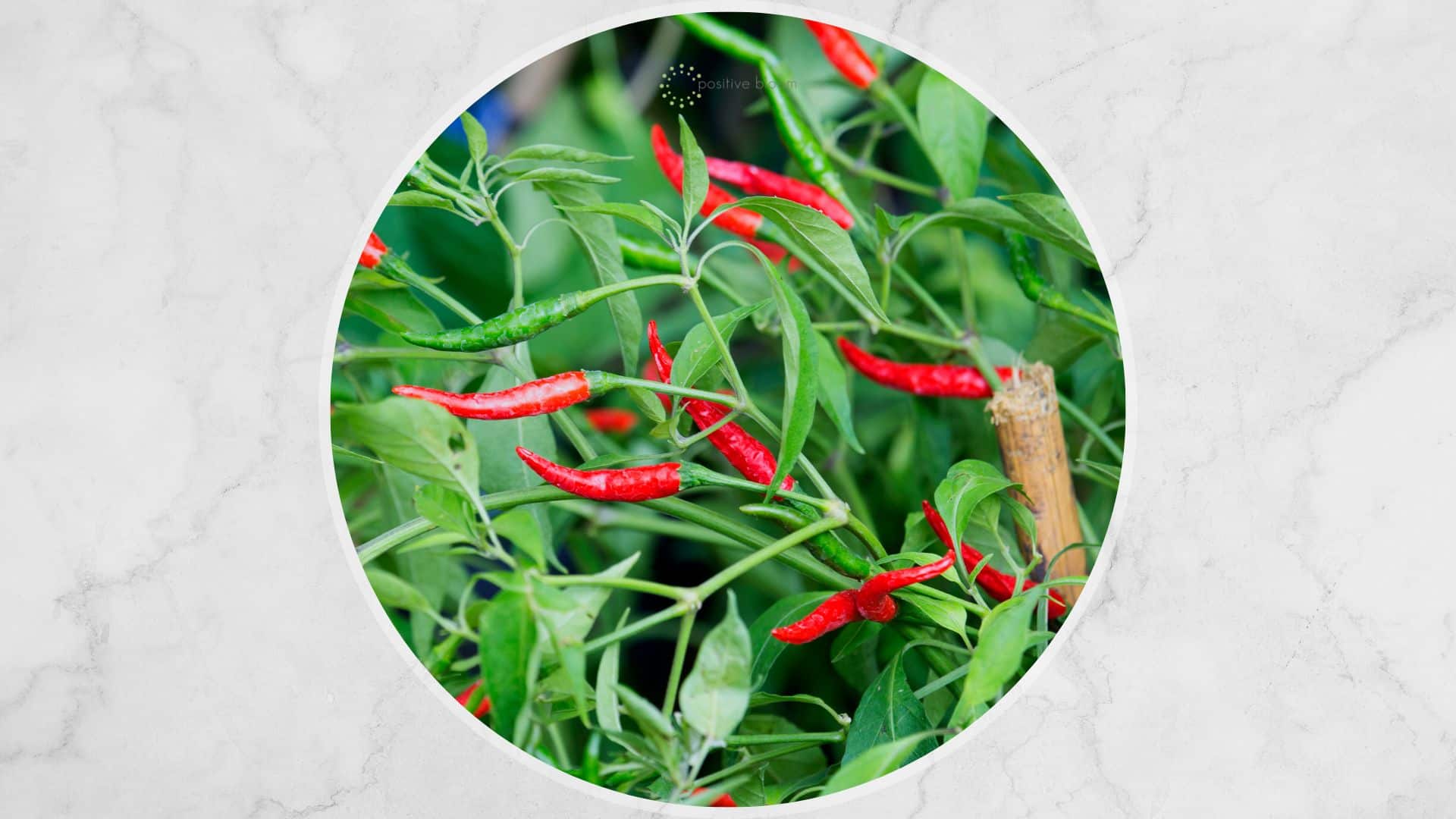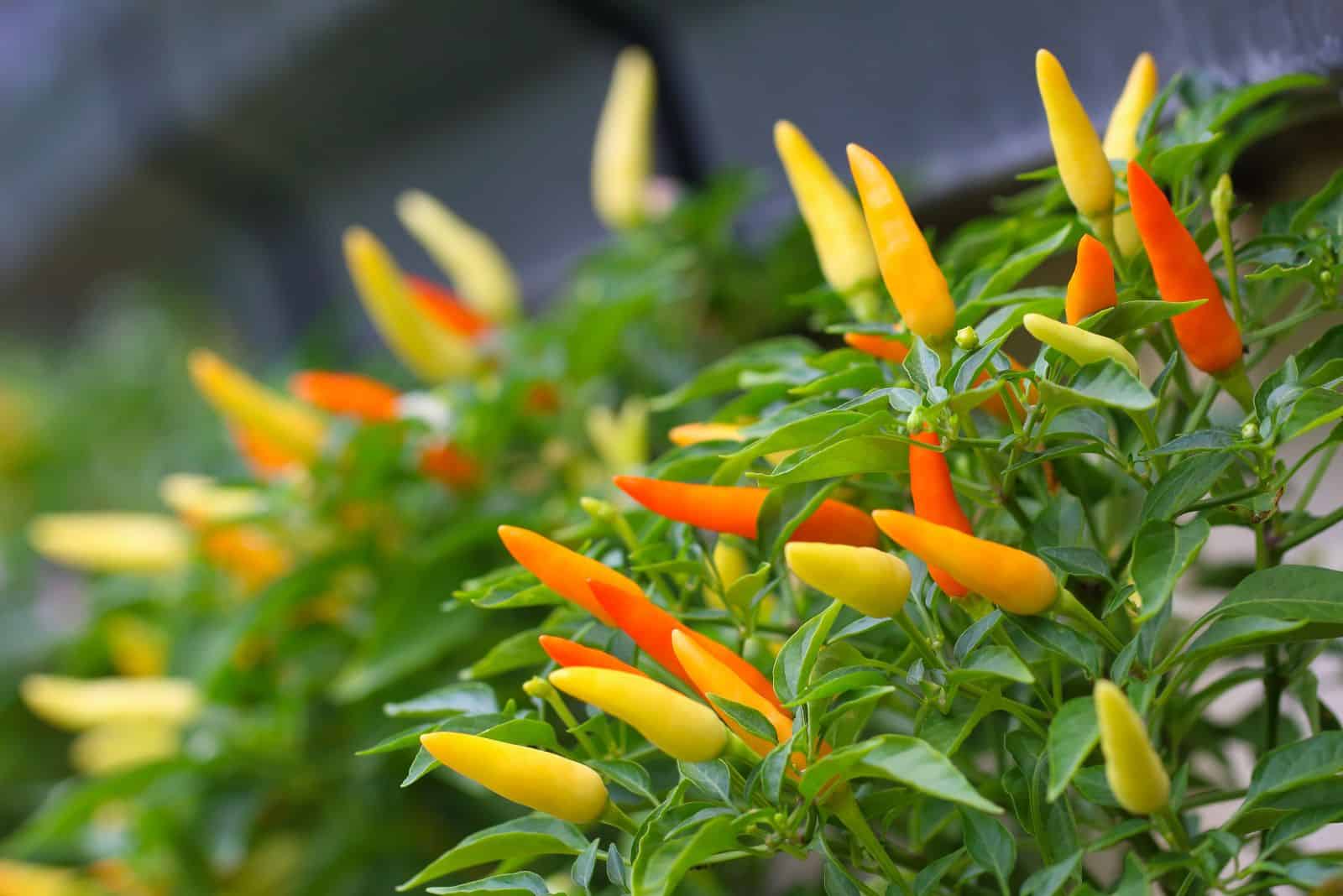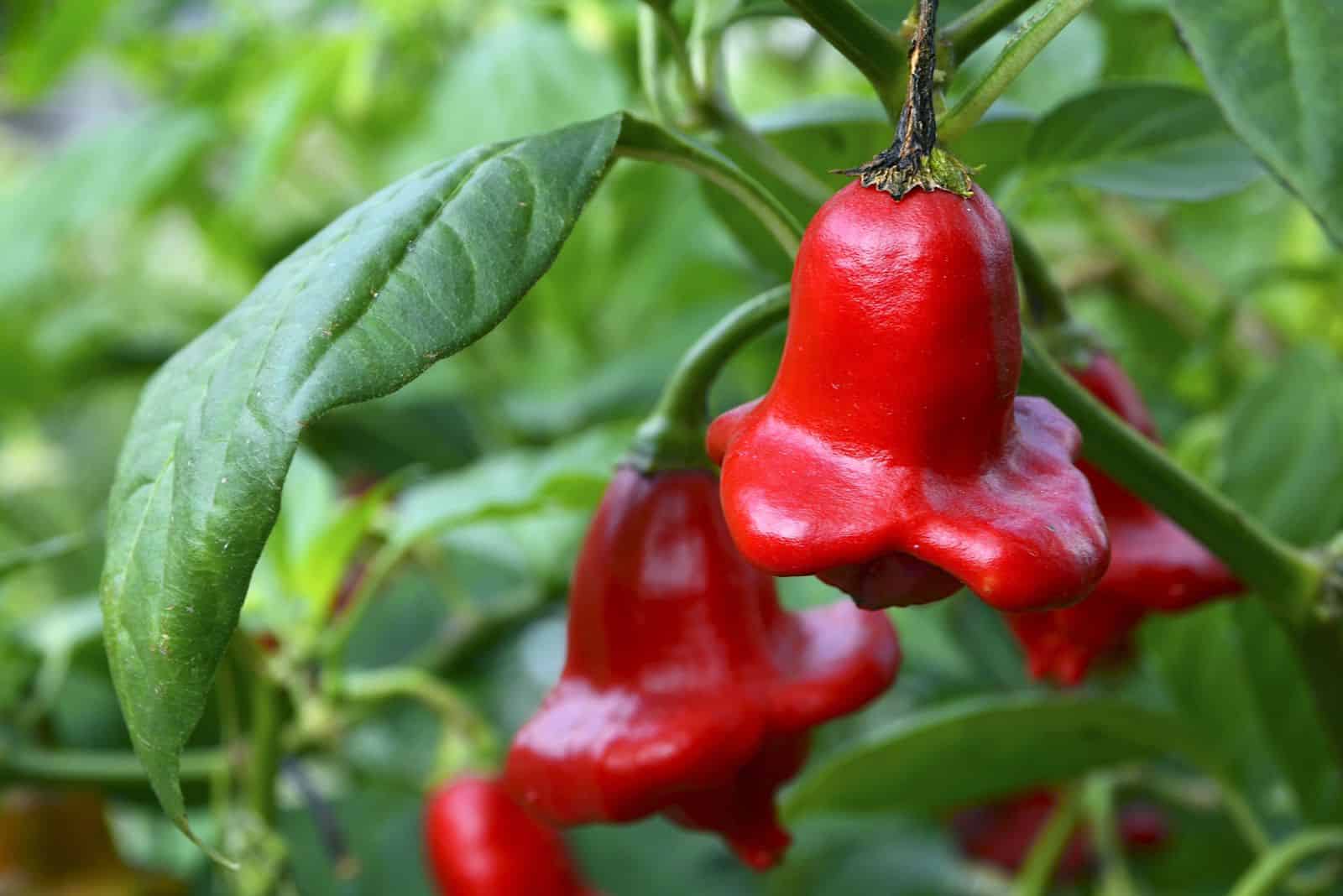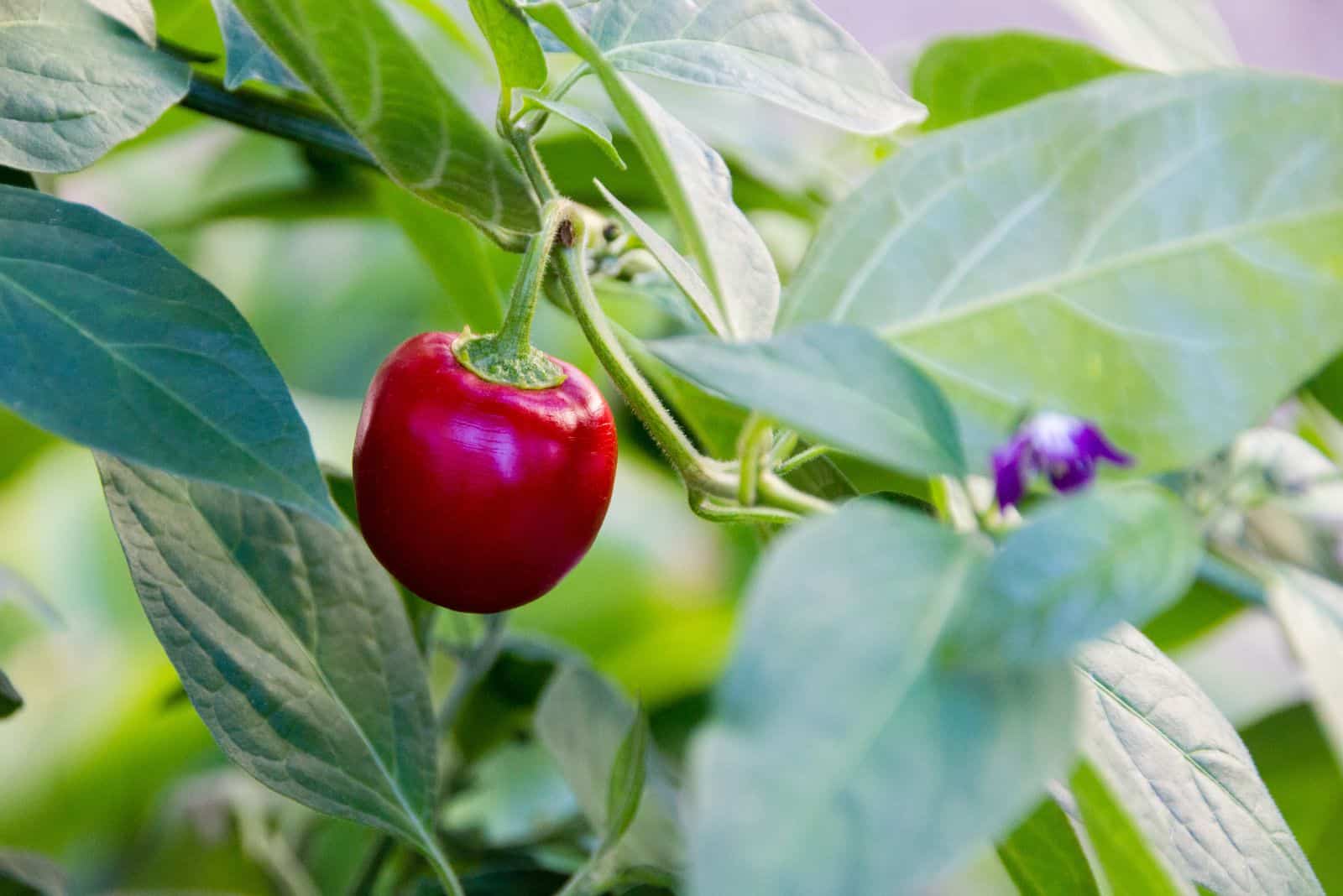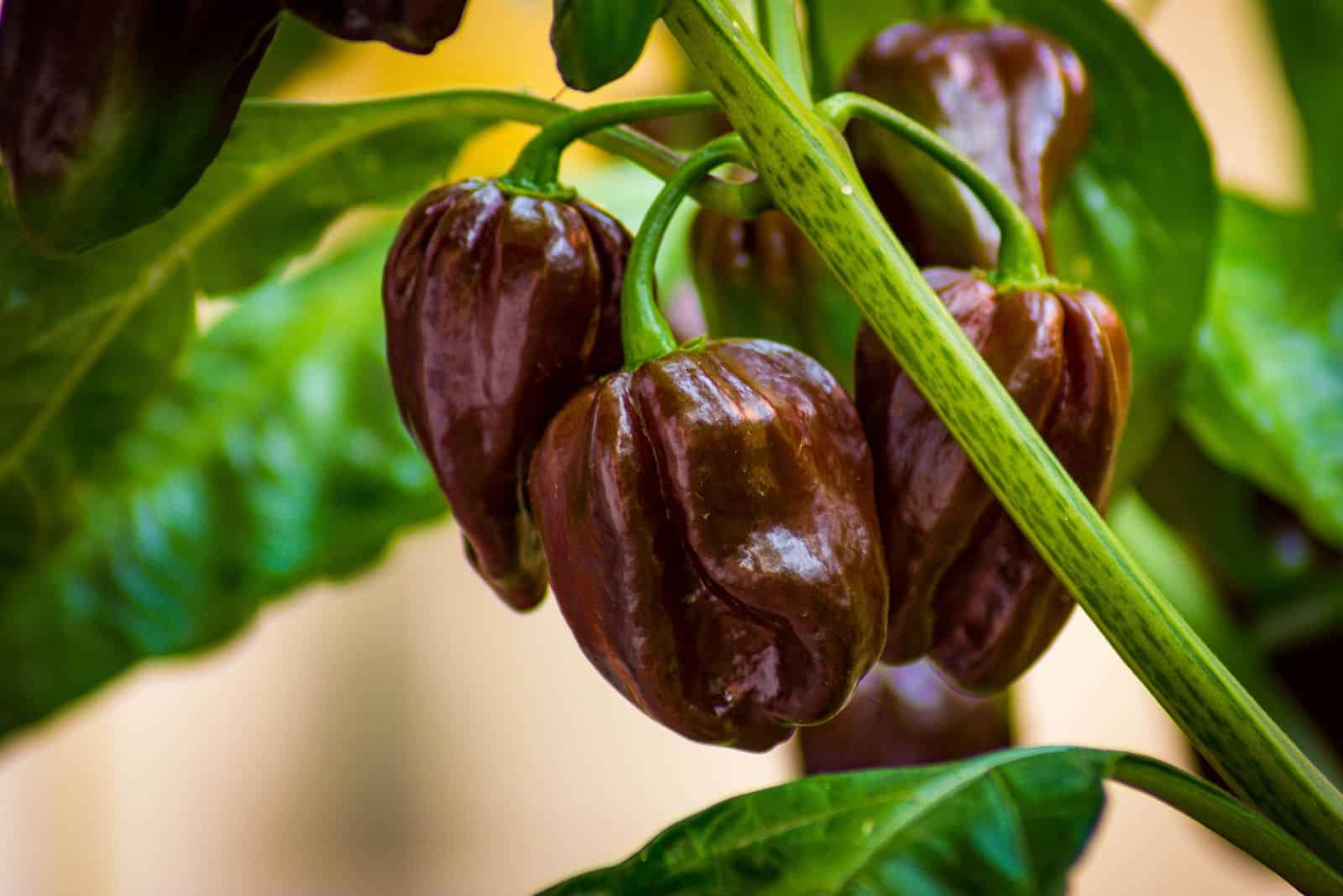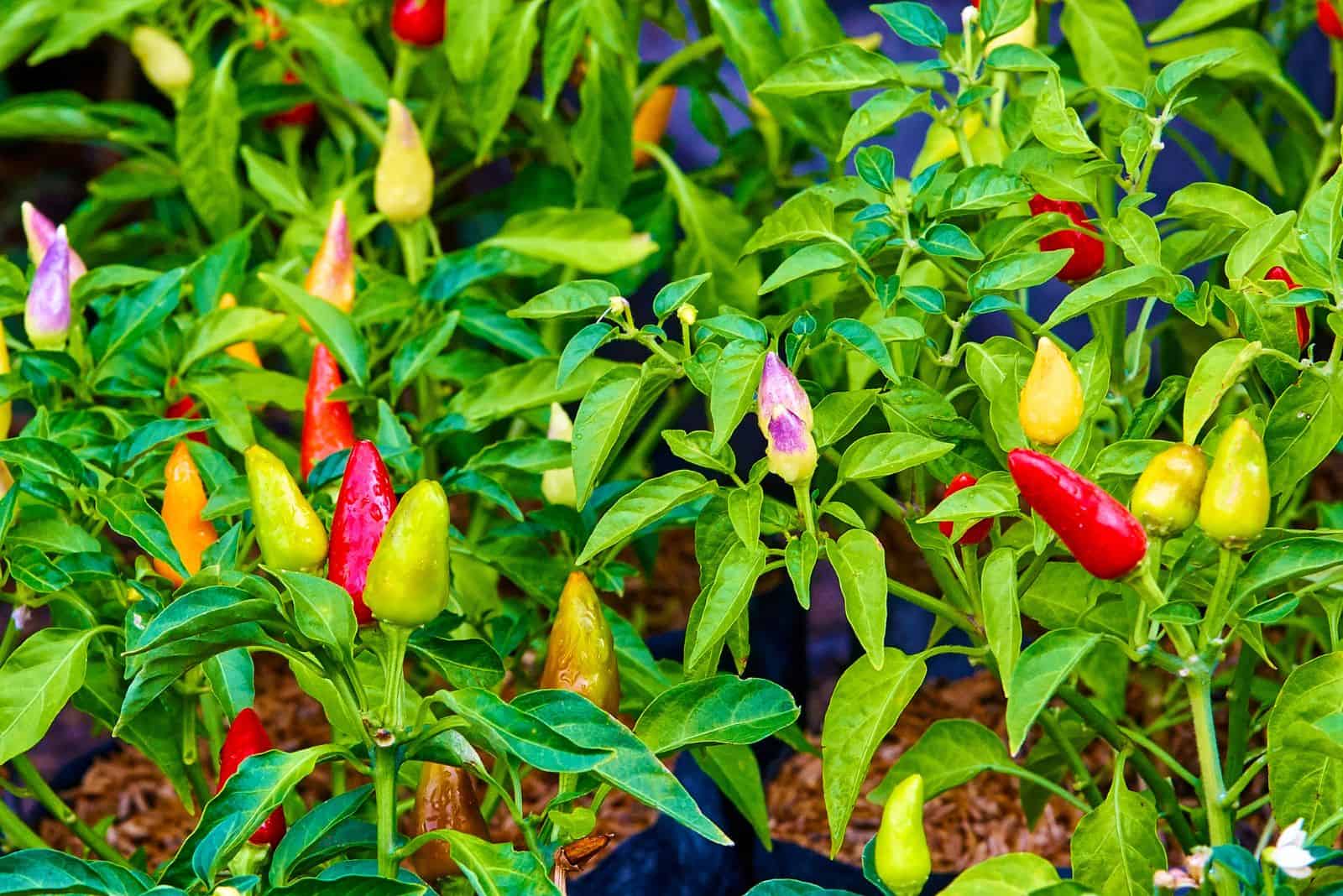If you are a gardener that loves spicy food, then you should definitely learn more about different types of chilli plants that you can grow in your garden!
Instead of spending money on all sorts of spices and sauces, you can try and make some from your own chilli plants. Most chilli plants require the same growing conditions as any other pepper plant.
Be careful, though, as these are some of the hottest peppers out there – they will burn your skin if you don’t wear gloves, let alone your tongue! However, we are in it for the challenge. Spicy things are extremely healthy too!
So, if you want to feel an extreme burning sensation, then try these types of chilli plants!
Different Types Of Chilli Plants
In the last few decades, the race to create the hottest chilli pepper in the world has been absolutely crazy! For a long time, the Red Habanero pepper was considered one of the hottest plants; however, it was quickly beaten by other varieties such as the Carolina Reaper and Trinidad Moruga Scorpion.
Now, there are over 4000 different types of chilli plants that can be grouped into 5 species:
1. Capsicum annuum
2. Capsicum baccatum
3. Capsicum chinense
4. Capsicum frutescens
5. Capsicum pubescens
Each variety has its own unique flavors and textures, but they are all surely hot as hell!
Growing chillis is relatively easy – you can treat them like any other peppers, though I would suggest that you wear gloves when dealing with them. If you don’t have much garden space, don’t worry because you can easily grow these plants in pots.
If you are interested in growing chilli plants in pots, then check out this awesome article: How To Grow Jalapenos In Pots: Best Tips And Care Guide
The Best Capsicum Annuum Varieties
Capsicum annuum species are the most commonly grown. This species includes lots of different peppers, from the hottest ones in the world, such as Jalapenos, Cayenne, or Serrano, to the sweetest peppers, such as Bell pepper.
These types of peppers come in different colors, shapes, and sizes. The word “annum” in the name stands for annual, though some varieties are perennials in their regions.
If you want to identify a Capsicum annum, you should just look at the pepper flowers and filaments – the flowers are not formed in clusters, but rather a single flower is produced, while filaments are white instead of purple (filaments support anthers).
Capsaicin makes all peppers spicy, and this substance has anti-inflammatory properties that are super beneficial to our health. For instance, it promotes heart health.
Here are some of the best Capsicum annuum varieties that are easy to grow:
• Cayenne – with SHU (Scoville heat units) ranging between 30,000-50,000, these peppers are one of the hot ones. Although some species can bloom yellow or even purple, they are typically red. It has a slightly smoky flavor, though it quickly turns to fire in your mouth.
• Fire Kiss – romance mixed with spiciness is a perfect mixture for any healthy relationship, and so is the Fire Kiss for your health. With over 40,000 SHU, this pepper will definitely get your heart pumping. The plant produces oval fruit in different colors, which makes it very decorative.
• Jalapeno – commonly known as chipotle, this pepper variety has 2,500-8,000 SHU and is not as spicy. Most growers harvest them when they are green, though they turn red as they mature. Jalapenos taste earthy and vegetal, much like green bell peppers.
• Anaheim – this mild pepper has 500-2,500 SHU. When ripe, the majority of varieties turn a greenish-red color, but certain anaheim peppers can completely change color to red. The most alluring aspect of it is its flavor; it is sweet and smoky with the just right amount of spiciness.
• Serrano – they are not considered to be the hottest ones, but they are definitely spicy. With SHU between 10,000-23,000, these peppers can surely bite your tongue. Young serranos are green like all other peppers, but if you let them ripen they can turn yellow, orange, red, or even brown. They have a similar taste as Jalapenos (earthy), though they are much hotter.
• Thai – these peppers have 50,000-100,000 SHU, which means that they are extremely spicy. As it gets older, this type curls and never turns a bright red color. However, there are orange types. They have flowery flavor mixed with spiciness.
The Best Capsicum Baccatum Varieties
Capsicum baccatum varieties are characterized by their fruity and smoky flavor. They are used predominantly in Central and South America. Some of them are sweet, some mild, and some are spicy – even with their spiciest varieties, you can still feel the delicious fruity flavor.
The word “baccatum” means berry-like, since most of these peppers are relatively small and wide. Their color varies between red, yellow, and orange. They take a long time to mature, which is why the seeds should be planted earlier.
These peppers are easily identified by their unique shape, though you can also look at the flowers – flower petals are usually white or greenish-white with diffused yellow spots around their bases.
Here are our top Capsicum baccatum picks:
• Brazilian starfish – it is mildly hot, with SHU between 15,000-20,000. They’re a great addition to meals since they won’t overpower other ingredients. They got their name because of their unique, saucer-shaped pods.
• Aji Pineapple – this yellow pepper with its pineapple flavor is one of the tastiest varieties from this genus. This pepper is perfect for fruity salsas and sauces. With 20,000 SHU, it is still considered hot. You can grow them in pots or in the garden.
• Sugar rush peach – as the name suggests, this variety is more sweet and spicy, and their color is similar to peaches. However, they are a bit spicier since they have 50,000-100,000 SHU!
• Bishop’s crown – this unique variety goes by many names, including Christmas bell and Joker’s hat, all because of its distinctive shape. They turn red as they mature. The SHU varies between 5,000-30,000. The flavor is fruity and spicy once they are fully ripe.
• Rainforest – these are small peppers that are slightly folded at the top. The colors vary from light green to red as they mature. Their citrusy aroma is an excellent addition to salsas. The Scoville heat units vary between 30,000-50,000.
• Aji fantasy – these varieties also have distinctive and slightly odd shapes. However, their fruity and sweet flavor overcomes it all! They are mildly hot, with SHU between 5,000-10,000.
The Best Capsicum Pubescens Varieties
Otherwise known as the “hairy” varieties, Capsicum pubescens are hardy peppers that are cold tolerant. Don’t worry that you’ll end up eating tiny hairs – it’s the leaves that are green and hairy, which is how you can distinguish them from other varieties.
They produce purple flowers and black seeds, which can also be used for identification. It is also interesting to note that these peppers cannot cross-pollinate with other domesticated varieties.
The peppers have thick walls, and they are meaty and juicy (kind of like tomatoes) – this is the reason they are not great candidates for drying. The flavor is sweet rather than spicy.
The best of Capsicum pubescens include:
• Mexican manzano – you might end up wondering if you are growing an apple or a pepper because these peppers look exactly like yellow apples. With their fruity and citrusy aroma, they make great additives to salsas and sauces. They are mildly hot, with 12,000-30,000 SHU.
• Rocoto manzano – they are apple-shaped red peppers with SHU between 30,000 up to 100,000. It is a bit of a spicier variety, though you can still feel the citrusy aroma.
• Peruvian rocotos – this one shares the same properties as the abovementioned Rocoto, though it appears to be a bit spicier. This is why it is primarily used as a condiment.
• Rocoto aji largo – originating from Ecuador, this pepper has an excellent taste and a lot of spiciness. It has medium sized peppers with pointy tips, and they are usually red. The SHU of this variety is 10,000-50,000.
• Bolivian locotos – you will taste a sweet flavor followed by a mild burning sensation if you ever try this variety. They are predominantly used for salsas, though you can also use them for salads if you dare.
The Best Capsicum Chinense Varieties
All of the hottest peppers belong to the Capsicum chinense genus. This includes Scotch Bonnet, Habaneros, the famous Bhut Jolokia, and many more!
You might think that they all originate from China due to their name “chinense”, though that is not entirely true. You see, a botanist named them that because he thought that they all originated from China, though they can be normally found in the Caribbean Islands, Central America, and the Yucatan area of Mexico.
Even though they are all very spicy, they have different spiciness levels. However, almost all of them have that delicious fruity flavor. If we take a look at the Habanero Scoville ratings, we can see that the hottest one is the Red savina habanero, with an unbelievable 580,000 SHU!
Yet nothing beats the Carolina reaper, the hottest pepper in the entire world, which has 2,200,000 SHU!
The leaves of capsicum chinense peppers are usually crinkled, which enables you to distinguish them from other peppers. If you dare, you can taste them to see if they are going to burn your tongue. They need a lot of warmth when growing.
These are some of the hottest peppers out there:
• Chocolate habanero – even though they are called chocolate, they taste nothing like it. They are commonly used to make BBQ sauces and salsas because of their unique smoky flavors. They are still spicy, ranking second on the habanero pepper Scoville with 577,000 SHU.
• Ghost pepper – also referred to as Bhut jolokia, these peppers are third on the overall list of the hottest peppers. They measure between 855,000-1,041,427 SHU, but you can still feel a bit of their fruity flavor in the beginning. Ghost peppers are harvested usually 5 months after growing.
• Scotch bonnet – represents a perfect combination of sweetness and spiciness. With SHU varying between 100,000-350,000, they are considered one of the hottest habaneros out there. They usually grow about 3 to 4 months.
• Trinidad scorpion – the second hottest pepper in the entire world, with a remarkable 1,400,000-2,000,000 SHU on the Scoville scale. Surprisingly, you can taste that fruity flavor despite its hotness. The colors of these peppers are green to red or golden-yellow. They grow about 90 to 120 days.
• Peach habanero – maybe they look like peaches, but they taste completely different. It measures 350,000 SHU and has an underlying fruity flavor. These peppers are used to make sweet and spicy jams, as well as add a little bit of spiciness to cocktails.
• Naga morich – these are closely related to ghost peppers. It reaches up to 1,500,000 SHU and is generally added to sauces and salsas.
The Best Capsicum Frutescens Varieties
The Capsicum frutescens species generally have a dry and smoky flavor. The Tabasco variety is used to make the famous Tabasco sauce.
They got their name from the plants’ appearances; “frutescens” usually means bushy or shrubby. This is why these plants are perfect for growing in containers indoors, though they can grow just fine in the garden as well.
These types of chili plants are relatively easy to identify – the flowers grow in clusters and the stems grow vertically. These peppers have soft flesh, and the colors vary from yellow to red.
Try and grow these Capsicum frutescens varieties:
• Tabasco – this pepper is juicy and smoky, though it is not as spicy as the abovementioned varieties. It measures around 30,000-50,000 SHU. You will still feel the burn, but you will also feel that smoky flavor. As they mature, they turn from small peppers to long and fierce red ones.
• Wiri wiri – these unique peppers have bulb-like bodies with colors varying from green to red. They are extremely spicy, with SHU ranging from 100,000-350,000. It has an earthy flavor that is very similar to tomatoes.
• Hawaiian pepper – small, red hot chilli peppers. Though they might not sing you a song, you can use them to make all kinds of stuff, including juices, jams, salts, and more. They produce elongated pods that are about 2-7 cm long with round points. The SHU measures between 50,000-70,000.
• Rawit – popular in Asian cuisine, these small elongated peppers are green to red in color. They are extremely hot, with a mind-blowing 448,000 SHU. They have a crunchy and fruity flavor followed by fiery heat.
• Malagueta – mostly used in Brazil, Malagueta peppers start off as small green peppers that turn red as they mature. The Scoville units vary between 60,000-100,000. They are usually conserved or used to make sauces.
• Piri piri – they have a versatile flavor that is a combination of sweet, sour, and spicy. The Scoville units range between 50,000 to 175,000. They are also called peri peri or pilipili, and Mostly used for sauces.
To Sum Up
There are lots of types of chilli plants that can be grown almost anywhere!
If you like it spicy, then consider growing one of the hot varieties we mentioned. If you try Ghost peppers, you will consider calling the fire department, that’s how hot they are!
If spicy food upsets your stomach, I would steer clear of chilli peppers. You should stick to Bell peppers instead.
Growing peppers in pots in your apartment or on a balcony is completely normal. I have been using my colorful peppers as decorations. In addition, you can easily adjust the growing conditions to suit their needs.
That’s all, folks. I hope this article was helpful.
Stay hot and spicy!

